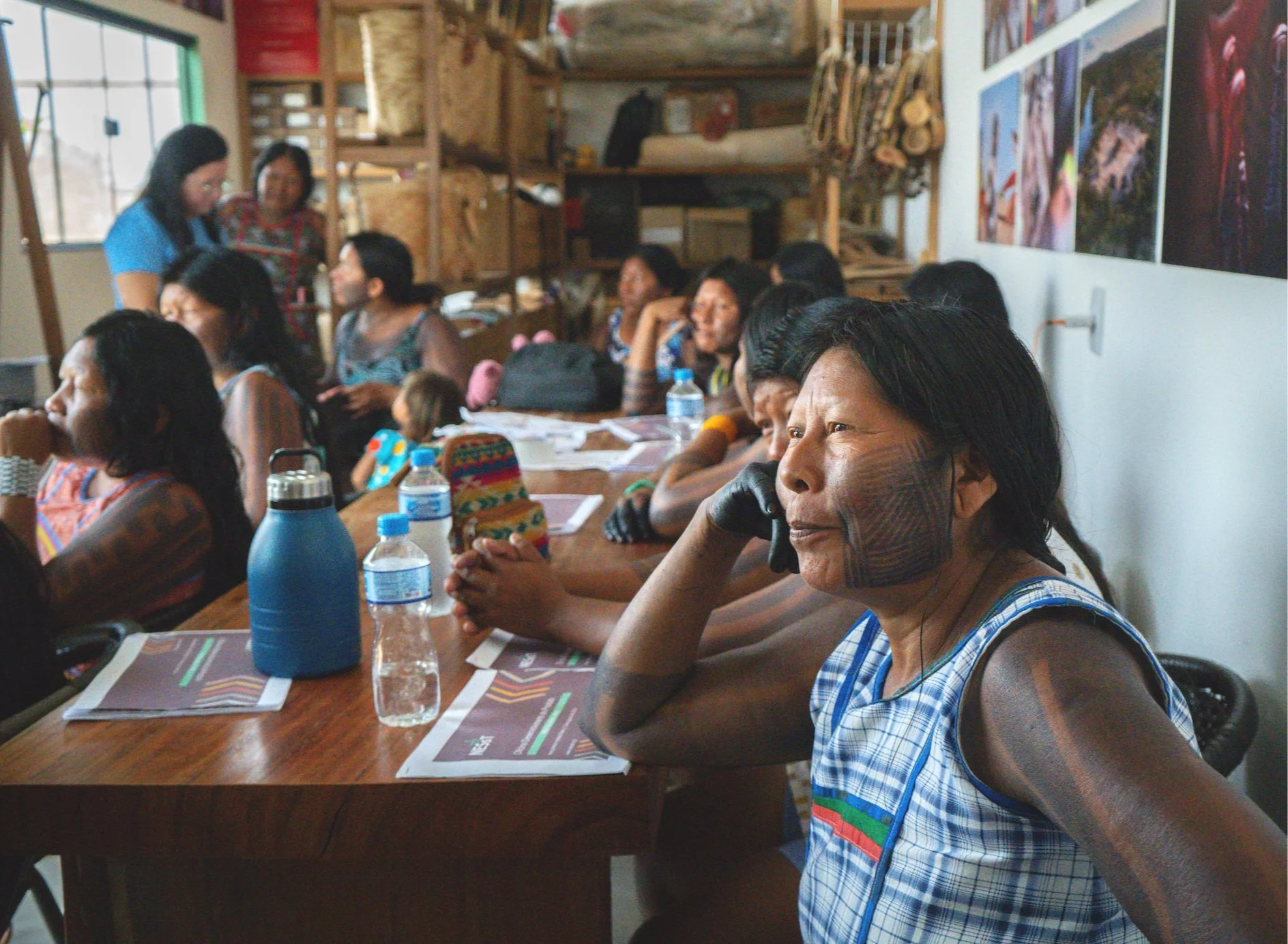Como a combinação de capital público, privado e filantrópico pode liberar financiamento para projetos de impacto em territórios vulneráveis
The Amazon holds immense potential for businesses that conserve the forest and strengthen local communities; from sustainable forestry and collecting non-timber forest products to community-based tourism and regenerative agriculture.
But despite their potential, many of these enterprises face structural barriers to accessing credit and investment. Traditional banks and investors often label them as “high risk,” making it difficult for them to grow and scale their impact.
Blended finance is a way to support these sustainable businesses. It brings together philanthropic, public, and private funds to reduce risks and attract investment. By taking on the initial “risk,” organizations like NESsT help to create a safer environment where banks and private investors feel more confident in lending to these businesses. This, in turn, improved their access to credit and growth capital.
This approach is based on three main pillars:
Impact: A strong focus on sustainable development and social inclusion.
Risk-adjusted returns: Different investors accept varying levels of risk, matched to the returns they expect.
Leverage: Catalytic capital absorbs the first risk, lowering the exposure for private investors.
Blended finance models can involve tools such as guarantees, subsidies, technical support, patient capital, and hybrid financial instruments, making enterprises more appealing and financially viable.
Na Amazônia, o financiamento combinado pode ser transformador
The blended finance model works especially well for enterprises in the Amazon’s bioeconomy value chains, where it supports businesses led by women, Indigenous peoples, and traditional communities to grow with greater stability and impact.
An example of this is NESsT’s support to sociobiodiversity cooperatives.
Foto: ASPROC
A Associação dos Produtores Rurais de Carauri (ASPROC), localizada às margens do Rio Juruá, apoia as comunidades ribeirinhas locais na produção e venda de produtos biodiversos provenientes exclusivamente da floresta tropical, incluindo o peixe pirarucu, a farinha de mandioca, a borracha natural e o açaí. NESsT forneceu financiamento à ASPROC para apoiar a reforma de uma instalação de processamento de peixes que teve parte de sua estrutura comprometida, permitindo sua rápida recuperação e retorno à operação.
Além disso, os investimentos da NESsT na Associação dos Trabalhadores Agroextrativistas da Ilha das Cinzas (ATAIC) e na Associação dos Agropecuários de Beruri (ASSOAB) financiaram a abertura de uma cozinha semi-industrial e de uma fábrica de processamento de óleo natural, respectivamente. Esses investimentos em infraestrutura básica ajudaram a preparar essas empresas comunitárias para acessar empréstimos bancários para capital de giro no futuro.
Foto: CooperSapó
No caso da CooperSapó, o apoio comercial e de governança da NESsT desempenhou um papel fundamental no fortalecimento da gestão da cooperativa e na possibilidade de acessar novas fontes de financiamento que exigem maior exposição ao risco.
When structured effectively, blended finance can turn promising projects into powerful solutions. It connects entrepreneurs who need support with investors who care about impact, helping build a forest-based economy that balances environmental protection, social justice, and economic growth.
To make this easier to understand, NESsT has created an infographic that clearly shows how blended finance works in practice and highlights our role in the Amazon’s impact ecosystem. This visual tool breaks down complex financial ideas into simple language, making it valuable for entrepreneurs, policymakers, partners, and anyone interested in advancing the Amazon bioeconomy through innovative financing.
Saiba mais sobre o trabalho daNESsT na Amazônia e como estamos apoiando negócios sustentáveis com soluções financeiras inovadoras.
Leia o relatório completo e descubra as recomendações da NESsTpara liberar financiamento para a bioeconomia liderada pela comunidade na Amazônia:
Este blog faz parte de uma série que explora as percepções, os principais temas e as abordagens que orientam a publicação da NESsT'Unlocking the Potential of the Global Financing Ecosystem to Invest in a Sustainable Bioeconomy in the Amazon from the Perspective of Local Communities' (Desbloqueando o potencial do ecossistema de financiamento global para investir em uma bioeconomia sustentável na Amazônia sob a perspectiva das comunidades locais). Com base nas vozes amazônicas e em conversas com a comunidade financeira global, o relatório identifica nove recomendações em duas áreas principais para que investidores públicos e privados focados no impacto melhorem o direcionamento, a eficácia e a eficiência de seus financiamentos para a bioeconomia amazônica. Por meio desta série de dez partes, pretendemos trazer essas oportunidades para conversas mais amplas e diversos espaços de discussão, ampliando o alcance das comunidades amazônicas e suas vozes, experiências e soluções.









